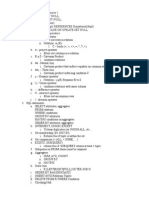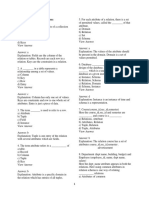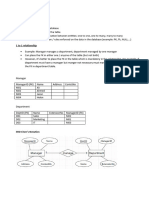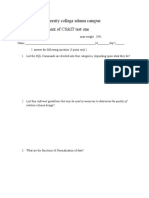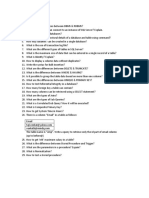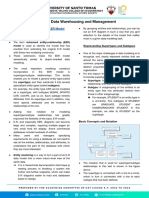0% found this document useful (0 votes)
14 views17 pagesDBMS Unit 2 Relational Model
The document covers advanced topics in Database Management Systems (DBMS), including relational algebra, domain and tuple relational calculus, SQL fundamentals, integrity constraints, triggers, and views. It provides theoretical foundations, practical examples, and operations for querying and manipulating relational data, along with practice questions and solutions. Key concepts such as normalization, query optimization, and transaction management are also discussed.
Uploaded by
Satyajeet SinghCopyright
© © All Rights Reserved
We take content rights seriously. If you suspect this is your content, claim it here.
Available Formats
Download as DOCX, PDF, TXT or read online on Scribd
0% found this document useful (0 votes)
14 views17 pagesDBMS Unit 2 Relational Model
The document covers advanced topics in Database Management Systems (DBMS), including relational algebra, domain and tuple relational calculus, SQL fundamentals, integrity constraints, triggers, and views. It provides theoretical foundations, practical examples, and operations for querying and manipulating relational data, along with practice questions and solutions. Key concepts such as normalization, query optimization, and transaction management are also discussed.
Uploaded by
Satyajeet SinghCopyright
© © All Rights Reserved
We take content rights seriously. If you suspect this is your content, claim it here.
Available Formats
Download as DOCX, PDF, TXT or read online on Scribd
/ 17



















